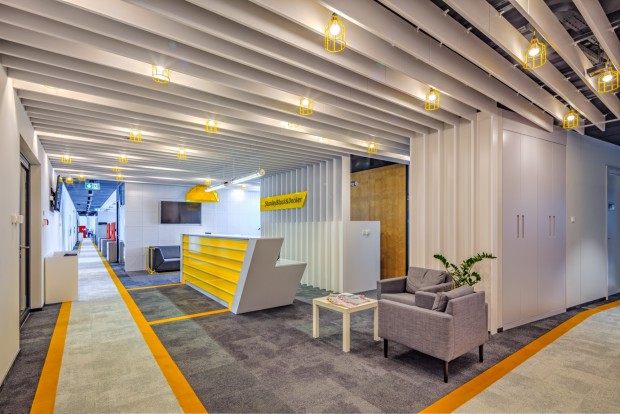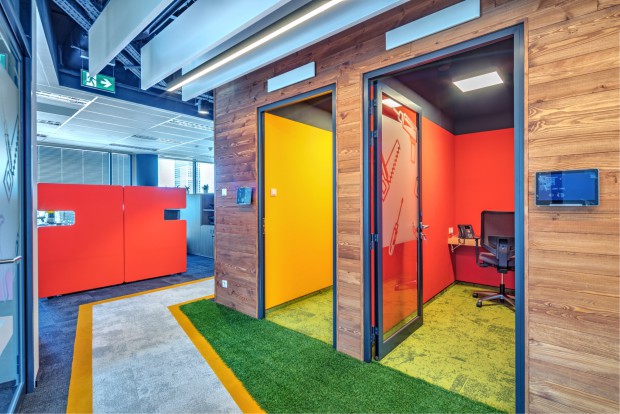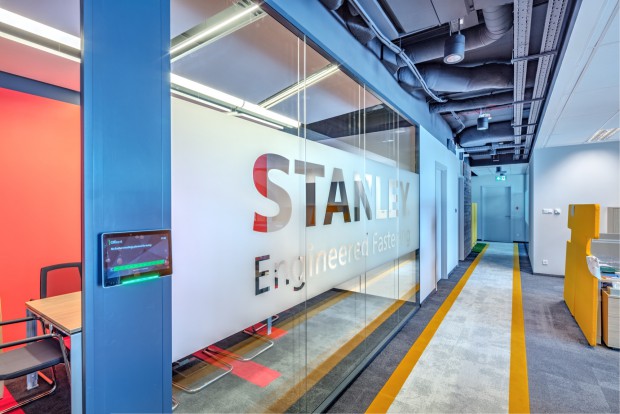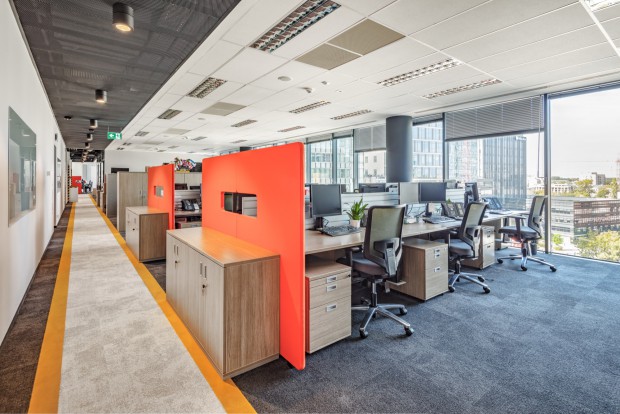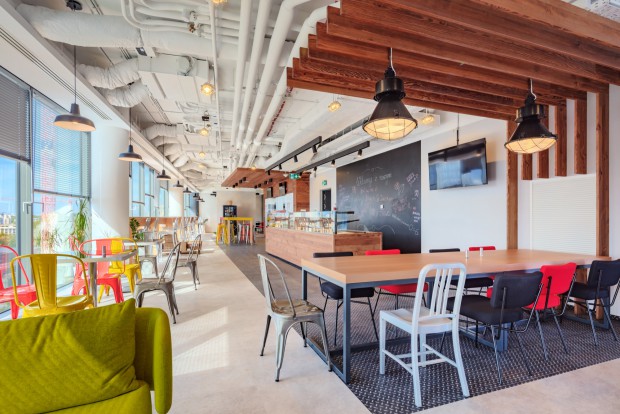When the company grows there finally comes a time to rebuild the office. How? Look for a new location? How to find trusted advisors? How to choose the right partner? All those questions cause one thing: stress.
Case Study: Stanley Black & Decker
Delivery of the recently opened office of Stanley Black & Decker (SBD) is a proof that fit-out projects can be done smoothly Stanley Black & Decker (SBD) has just transferred their Warsaw team from the business complex Park Postępu in Mokotów to the new Proximo building near Rondo Daszyńskiego.
The contractor and the designer of the space was Tétris. The entire interior has been delivered in three months. On three floors, of a total area of 4300 square meters, Tétris created an office enchanting with its original, colourful design and modern technical solutions.
As always, one of the core challenges was to reduce risks in several areas: budget, time and quality. The above can be assured by a simple procedure - an Open Book approach.
Time to open the books
The new office is an example of, a pioneering on the Polish market, application of Open Book formula in a large fit-out project, implemented under the guaranteed maximum price - GMP (Gross Maximum Price).
Using that formula means working in an open book system from the very beginning of the project. This allows the client to have full knowledge of prices of all the products and services. Also, the client agrees with the contractor on a specific margin, which is then added to each invoice. Often, even the remuneration of individual employees involved in the work is established and shared with the client. All of this is necessary to eliminate all possible uncertainties and doubts in the context of the budget, and effectively allocate responsibilities.
Value Engineering is a refund to the customer
An important stage in Open Book projects is Value Engineering process. It occurs after the client and the general contractor select specific solutions (products and services). The contractor then negotiates with suppliers their labour prices, and also analyses whether - while maintaining the established quality – it is possible to use more economic solutions. The savings generated this way, get back to the customer's account. "At every stage we knew perfectly well how much each of the proposed options will cost, and how it will affect the cost of the entire project. I would like to mention that our project has been completed below the estimated cost of the project. "- Adds Jacek Białas, EMEA Business Service Director Stanley Black & Decker.
Paweł Brodzik, managing director of Tétris confirms that it is not a matter of a single case like this. "It happened that the client gave us 50% of the amount saved in the Value Engineering as an additional remuneration for the great result."
Is it only about numbers?
Looking at the project considering only its budget and schedule may seem limited. After all, fit-out is not only numbers, but also the people, the quality of their work, flexibility, imagination... Yes, but all these aspects, sooner or later are reflected in the budget. "If from the very beginning we discuss with the customer all costs, in every detail, there is no way to miss anything. In result the work is much easier for everyone involved. There are no misunderstandings, no disappointments or delays. Planning of expanses requires a perfect order in the schedule of the project, and that assures a peace of mind to our clients.” – notices Bogumiła Kompowska, Business Development Manager Tétris, who was a supervisor of the project on behalf of the contractor.
Open Book accounting – also through the Value Engineering process – allows to generate around 10-15% savings from the GMP. It is a significant difference in comparison to the traditional fit-out management model, which involves usually a number of independent services providers. In those cases the discrepancy between the final cost of the project and the initially established price are often at the level of 15-20 %. When dealing with projects for around 10 mil PLN it results in differences of even 1,5-2 mil PLN. Conclusion is clear. It is better to take into consideration more than just a bill of numbers and prices, but also a guarantee that the proposed conditions will not change.
